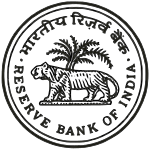Reserve Bank of India
The Reserve Bank of India (RBI) is India's central bank and regulatory body under the jurisdiction of Ministry of Finance , Government of India. It is responsible for the issue and supply of the Indian rupee and the regulation of the Indian banking system. It also manages the country's main payment systems and works to promote its economic development. Its top official is designated as Governor who is a civil servant of the IAS or IES cadre.
Until the Monetary Policy Committee was established in 2016,[5] it also had full control monetary policy in India.[6] It commenced its operations on 1 April 1935 in accordance with the Reserve Bank of India Act, 1934.[7] The original share capital was divided into shares of 100 each fully paid.[8] Following India's independence on 15 August 1947, the RBI was nationalised on 1 January 1949.[9]
The overall direction of the RBI lies with the 21-member central board of directors, composed of: the governor; four deputy governors; two finance ministry representatives (usually the Economic Affairs Secretary and the Financial Services Secretary); ten government-nominated directors; and four directors who represent local boards for Mumbai, Kolkata, Chennai, and Delhi. Each of these local boards consists of five members who represent regional interests and the interests of co-operative and indigenous banks.
It is a member bank of the Asian Clearing Union. The bank is also active in promoting financial inclusion policy and is a leading member of the Alliance for Financial Inclusion (AFI). The bank is often referred to by the name 'Mint Street'.[10]


ಕಾಮೆಂಟ್ಗಳಿಲ್ಲ:
ಕಾಮೆಂಟ್ ಪೋಸ್ಟ್ ಮಾಡಿ